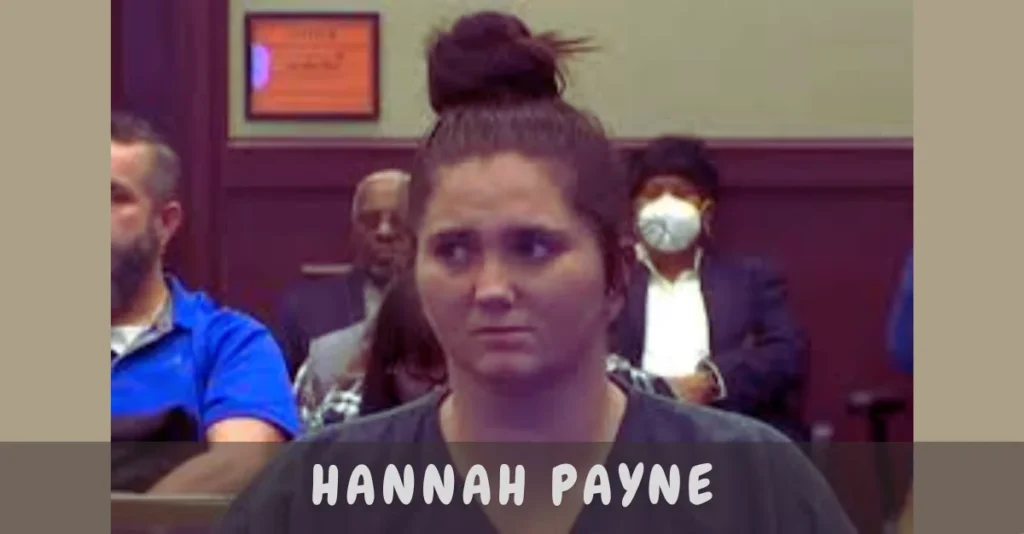Introduction to the case of Hannah Payne
In a case that has captivated the nation, Hannah Payne was sentenced to life in prison for malice murder. The courtroom drama unfolded with gripping testimonies and emotional outbursts, drawing attention from media outlets and social platforms alike. Payne’s actions on that fateful day left an indelible mark not only on her own life but also on the family of Kenneth Herring, the victim whose story is now intertwined with hers. As discussions surrounding justice and accountability continue to swirl, this case raises questions about morality and societal standards. What led to this shocking verdict? Let’s delve deeper into the details surrounding Hannah Payne’s sentencing and explore how it has impacted those involved—and beyond.
Overview of the Malice Murder charge and sentencing process
Malice murder is a serious charge that carries severe consequences. It typically involves the intentional killing of another person, demonstrating a clear disregard for human life. This premeditated act sets it apart from other forms of homicide.
The legal process surrounding malice murder charges can be lengthy and complex. After an arrest, prosecutors gather evidence to build their case. They must prove beyond a reasonable doubt that the defendant acted with malice aforethought.
Sentencing varies based on state laws but often includes life imprisonment or even death penalty options in some jurisdictions. The judge evaluates various factors during sentencing, such as the nature of the crime and any mitigating circumstances presented by the defense.
In high-profile cases like Hannah Payne’s, public opinion and media scrutiny can also influence proceedings, adding layers to an already intricate legal landscape.
Background information on Hannah Payne and the victim, Kenneth Herring
Hannah Payne is a young woman whose life took a tragic turn. At the time of the incident, she was navigating her early twenties with dreams and aspirations like many others. However, that trajectory changed dramatically following the event that would define her future.
Kenneth Herring, on the other hand, was a 62-year-old man known for his warm personality and community involvement. Friends described him as someone who always lent a helping hand to those in need. His sudden death left an indelible mark on those who knew him.
The connection between Hannah and Kenneth evolved into something far more complex than mere acquaintanceship. Their lives intersected in ways that led to catastrophic consequences, shaking both families and sparking public interest in their story.
Details of the incident and evidence presented in court
The incident involving Hannah Payne unfolded on a seemingly ordinary day. It escalated quickly, leading to the tragic death of Kenneth Herring. Witnesses reported that an argument erupted between them during a confrontation.
During the trial, surveillance footage played a critical role. The video captured key moments leading up to the altercation and revealed both parties’ behavior.
Forensic evidence was equally compelling. Ballistics tests confirmed that the weapon used belonged to Payne. This finding added weight to the prosecution’s case.
Testimonies from bystanders painted contrasting pictures of what transpired. Some claimed self-defense, while others described a premeditated attack.
Each piece of evidence contributed significantly to painting a vivid narrative of the events that led to this devastating outcome for everyone involved in this case.
Arguments from both the prosecution and defense
The courtroom buzzed with tension as the prosecution laid out its case against Hannah Payne. They portrayed her actions as premeditated, emphasizing that she had deliberately taken Kenneth Herring’s life. Witnesses testified to a heated confrontation leading up to the fatal moment. The prosecution argued that this was not an act of self-defense but rather a calculated decision fueled by malice.
On the other side, the defense painted a different picture. They claimed Hannah was acting in fear for her own safety during a chaotic encounter. Defense attorneys insisted she felt threatened and had no choice but to react violently in that split second. They stressed her emotional state and previous experiences which led her to believe lethal force was necessary.
Both sides presented powerful narratives, each seeking justice through their unique lens on what transpired that fateful day.
The judge’s decision and reasoning behind it
The judge’s decision in the Hannah Payne case came after a thorough review of the evidence and testimonies presented during the trial. She was found guilty of malice murder, which carries severe consequences under Georgia law.
In delivering her sentence, the judge emphasized that this act was not just a momentary lapse but reflected an intention to harm. The gravity of taking another person’s life weighed heavily on her ruling.
Furthermore, she noted how important it is for justice to be served, both for Kenneth Herring’s family and society as a whole. The community needed reassurance that such acts would not go unpunished.
The emotional toll on everyone involved played a significant role in shaping her final judgment—an acknowledgment of loss intertwined with accountability.
Reaction from family members and community
The sentencing of Hannah Payne ignited strong emotions within the community. Family members of Kenneth Herring expressed profound grief and anger at the verdict. They felt justice was served, albeit too late.
Supporters rallied outside the courthouse, holding signs that reflected their sentiments about accountability and loss. Many in the crowd shared personal stories about Kenneth, highlighting his kind spirit and how much he meant to them.
Conversely, some locals voiced concerns over the fairness of the trial. They questioned whether all factors were considered adequately during proceedings. This division created a palpable tension in an already grieving community.
Social media platforms buzzed with discussions around the case. Posts ranged from heartfelt tributes to heated debates on justice reform. The conversation surrounding Hannah Payne’s actions will likely linger long after this chapter has closed for many involved.
Discussion on the controversy surrounding the case
The case of Hannah Payne has ignited heated discussions across various platforms. Many believe that the circumstances surrounding Kenneth Herring’s death raised critical questions about self-defense versus malice.
Supporters argue that Hannah was acting out of fear when she confronted Herring, who had allegedly attempted to flee after a car accident. Critics, however, assert that her actions were premeditated and reflect a deeper issue regarding violence in similar confrontations.
Social media has seen an influx of opinions—some rallying for justice for Herring while others advocate for leniency towards Payne. This division highlights societal divides over race, gender dynamics, and perceptions of victimhood.
Furthermore, the role of mental health in such cases is also being scrutinized. Advocates are calling attention to how emotional distress can cloud judgment during heightened situations like this one. The discourse around this case continues to evolve as more voices join the conversation.
Similar cases and their outcomes
There are several cases that mirror Hannah Payne’s situation, each revealing the complexities of malice murder charges. One notable case is that of Marissa Alexander, who faced a similar dilemma concerning self-defense and perceived threats. Her initial 20-year sentence sparked widespread debate about justifiable force.
Another significant case involved Michael Dunn, who was convicted for shooting into a car after a dispute over loud music. His sentencing highlighted issues surrounding racial tensions and the Stand Your Ground law.
These instances illustrate how juries grapple with emotions while determining intent in violent confrontations. Each outcome varies based on circumstances, public perception, and legal representation.
The media often amplifies these cases, influencing community reactions and even judicial decisions. As society navigates justice systems amid rising crime rates, such parallels raise questions about fairness and accountability across different scenarios involving lethal actions.
Conclusion:
The case of Hannah Payne has sparked intense debate and drawn significant public attention. The circumstances surrounding the malice murder charge raise questions about justice, accountability, and societal impacts. As communities grapple with such complex issues, it is crucial to reflect on the broader implications of this verdict.
Hannah’s actions led to a tragic loss of life, irrevocably altering both her future and that of Kenneth Herring’s family. The courtroom drama showcased not only the legal arguments but also highlighted deep emotions from all involved. As people continue to process this case, its effects will resonate in discussions about self-defense laws and their applications.
While opinions vary widely regarding Hannah Payne’s sentence for malice murder, one thing remains clear: every life lost carries weighty consequences. This incident serves as a reminder of how quickly lives can change due to impulsive decisions fueled by fear or desperation.
As we move forward into an uncertain future with evolving conversations around crime and punishment, cases like this will undoubtedly shape our understanding of justice in society. The discussion isn’t merely academic; it affects real lives beyond just those directly involved.
FAQs
What is Hannah Payne?
Hannah Payne is a woman who was sentenced to life in prison for the malice murder of Kenneth Herring. Her case has garnered national attention due to the nature of the crime and legal proceedings.
What is malice murder?
Malice murder refers to the intentional and premeditated killing of another person, showing a clear disregard for human life. It is one of the most severe homicide charges.
What led to Hannah Payne’s sentencing?
Hannah Payne was found guilty of malice murder after shooting Kenneth Herring. Evidence, including surveillance footage and witness testimony, supported that the killing was intentional.
How did the victim’s family react to the sentencing?
Kenneth Herring’s family expressed deep grief and anger, feeling that justice had been served, although the emotional toll on both families was immense.
What is the controversy surrounding this case?
The controversy centers on whether Hannah Payne acted in self-defense or with premeditated intent, raising debates about the fairness of the trial and the influence of race and mental health in legal decisions.







